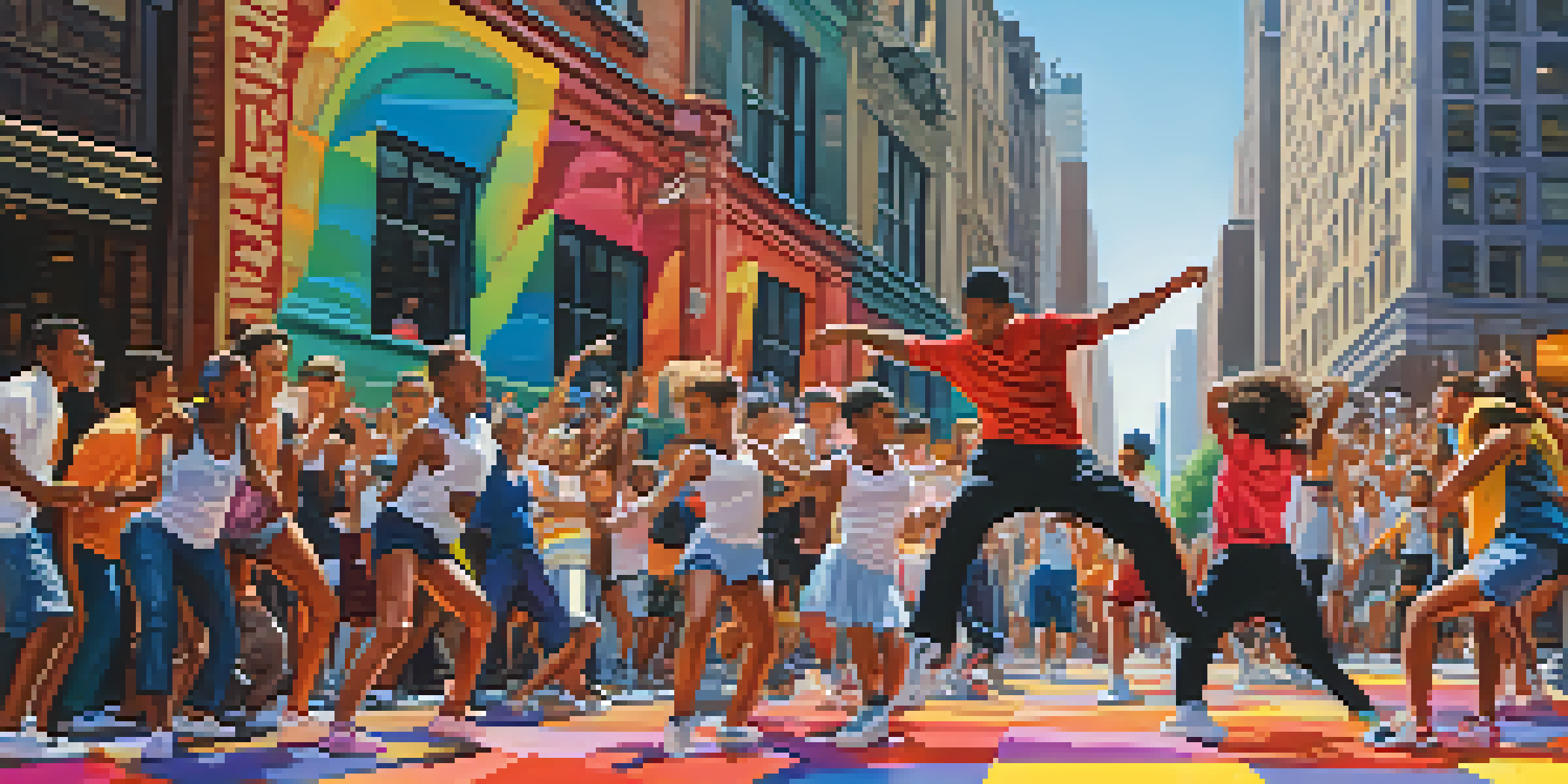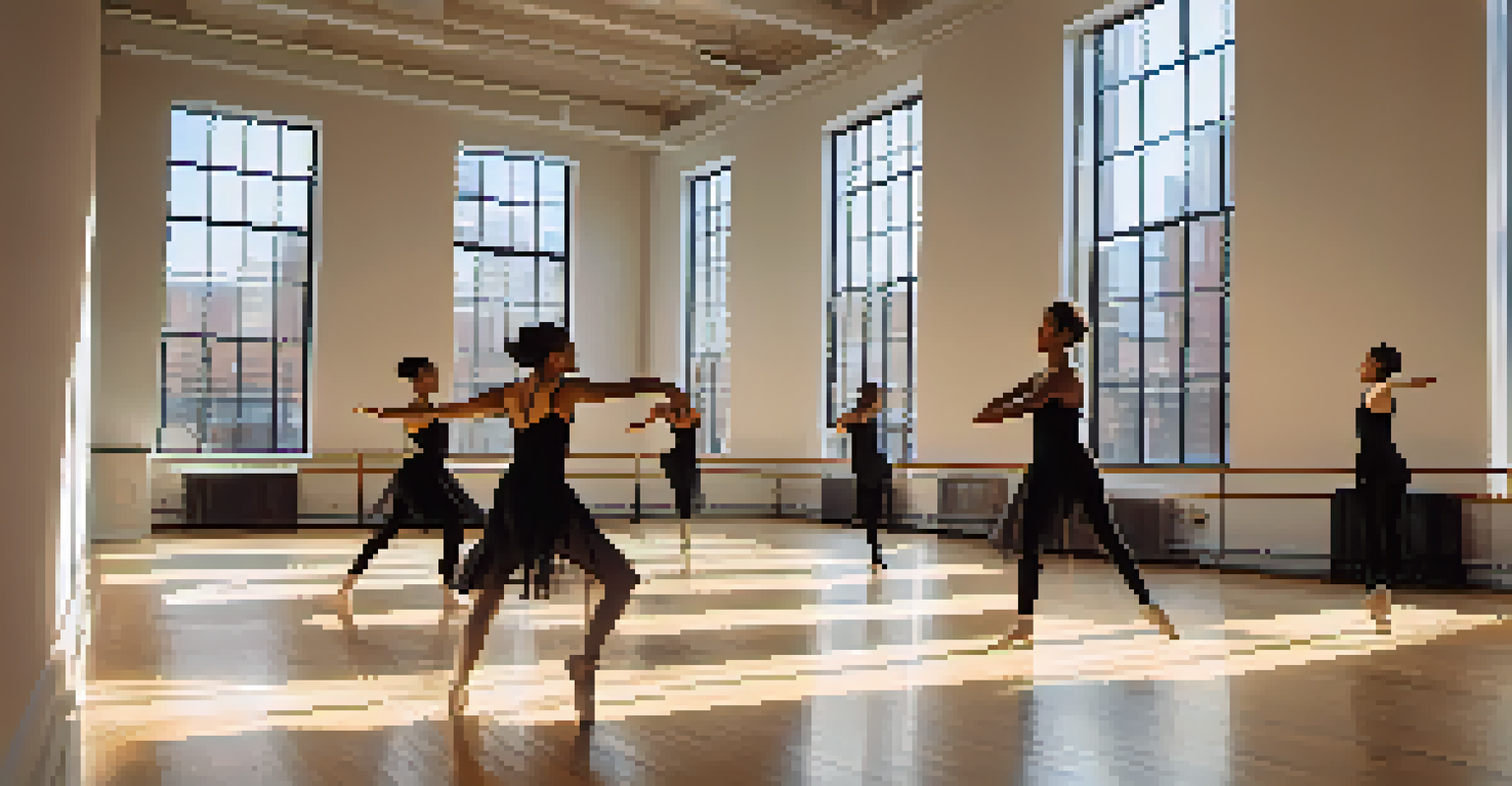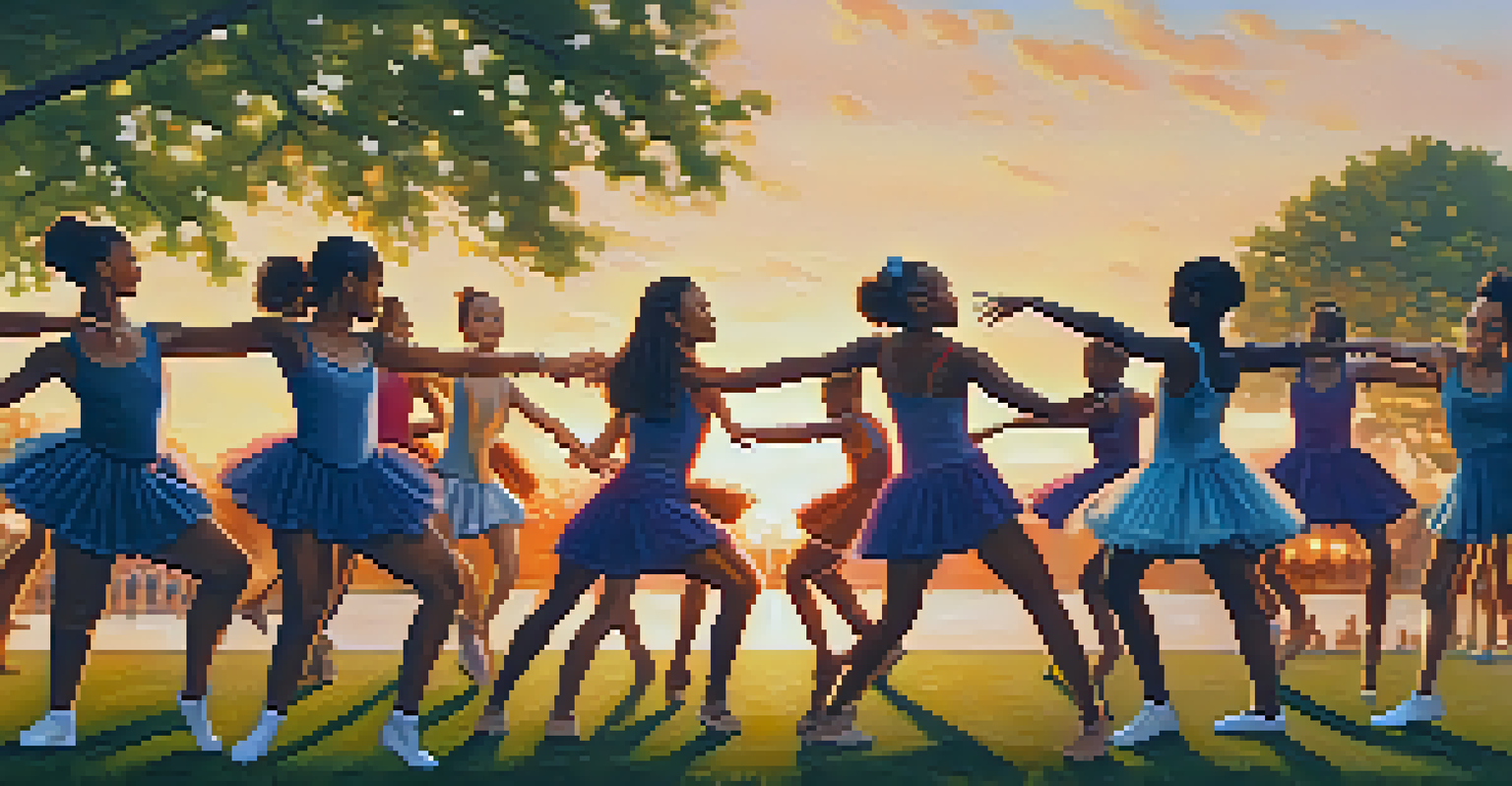Examining the Role of Dance in NYC Youth Culture Trends

The Historical Roots of Dance in NYC's Youth Scene
Dance has long been woven into the fabric of New York City's cultural identity. From the early days of the Harlem Renaissance to the emergence of hip-hop in the Bronx, dance has provided a platform for youth expression and community building. These historical movements not only paved the way for current trends but also set the stage for a dynamic dialogue between generations of dancers.
Dance is the hidden language of the soul.
In the 1970s, breakdancing took center stage, showcasing the creativity and resilience of NYC's youth. This art form, born from the streets, gave young people a sense of belonging and purpose. As dance styles evolved, they reflected the socio-economic challenges and triumphs faced by the community, making dance a powerful medium for storytelling.
Today, as we look back at these roots, it's clear that the legacy of dance continues to shape the identity of NYC's youth. Each new generation builds on the foundations laid by their predecessors, creating a rich tapestry of movement and expression that keeps the spirit of NYC alive.
Dance as a Form of Self-Expression for NYC Youth
For many young New Yorkers, dance is more than just movement; it's a form of self-expression. Whether it's through hip-hop, ballet, or contemporary styles, dance allows youth to convey their emotions and experiences in a way that words sometimes cannot. This creative outlet fosters individuality and encourages confidence, essential traits for navigating the complexities of urban life.

Moreover, dance offers a space for reflection and connection. When youth engage in dance, they share their stories and struggles, bridging gaps between diverse backgrounds. In this way, dance becomes a unifying force, allowing young people to express their unique identities while also finding common ground with others.
Dance Shapes NYC Youth Identity
Dance in New York City serves as a powerful medium for self-expression and community building, reflecting the diverse experiences of its youth.
As the dance scene in NYC evolves, we see more young people embracing different forms of expression, often blending genres. This hybridization reflects a broader cultural shift towards inclusivity, showcasing the importance of dance in shaping personal and communal identities.
Social Media's Impact on NYC Youth Dance Trends
In today's digital age, social media plays a pivotal role in shaping dance trends among NYC's youth. Platforms like TikTok and Instagram have transformed how young dancers share their work, allowing them to reach a global audience with just a few clicks. This instant access to new styles and challenges fosters creativity and encourages experimentation, resulting in the rapid evolution of dance trends.
We may not be able to change the world, but we can change ourselves, and through our dance, we can influence others.
These platforms not only provide a stage for performance but also serve as a space for community engagement. Young dancers can connect with peers, collaborate on projects, and even participate in viral dance challenges that promote inclusivity and camaraderie. This sense of belonging can be especially important in a bustling city like New York, where youth often seek connection amidst the chaos.
However, while social media can amplify voices, it can also create pressure to conform to trending styles. Young dancers may feel the need to prioritize popularity over personal expression, leading to a complex relationship with their art. Finding balance in this digital landscape is crucial for nurturing authentic creativity.
Dance as a Tool for Social Change in NYC
Beyond personal expression, dance serves as a powerful tool for social change in New York City. Many youth-led dance initiatives focus on raising awareness about social issues such as racial inequality and climate change. Through performances and workshops, young dancers can advocate for change, inspiring their peers to engage with critical conversations.
Organizations like The DANCE Project encourage youth to use dance as a medium for activism, providing them with the resources to create impactful performances. These efforts not only empower young people but also highlight the role of art in shaping public discourse. Dance becomes a voice for the voiceless, making a statement that resonates beyond the stage.
Social Media Drives Dance Trends
Platforms like TikTok and Instagram have transformed how young dancers share their creativity, fostering both community and rapid trend evolution.
As these movements gain traction, we see a growing recognition of the importance of including youth voices in the conversation about social justice. Dance, as a collaborative art form, fosters teamwork and encourages young people to take ownership of their narratives, ultimately driving meaningful change in their communities.
The Role of Dance in Building Community Among NYC Youth
One of the most beautiful aspects of dance is its ability to foster community. In NYC, dance studios, street corners, and parks become gathering places where youth can share their passion and creativity. These spaces not only encourage collaboration but also cultivate friendships that often last a lifetime, creating a sense of belonging in an otherwise overwhelming city.
Dance classes and workshops often emphasize teamwork, allowing young people to learn from one another and support each other's growth. This collaborative spirit is essential, as it teaches valuable life skills such as communication, patience, and empathy. The bonds formed through dance can help youth navigate challenges both inside and outside the studio.
As communities come together through dance, they create a vibrant tapestry of cultures and perspectives. This melting pot of creativity enriches the NYC dance scene, ensuring that it remains dynamic and ever-evolving, reflecting the diverse experiences of its youth.
Challenges Faced by NYC Youth in Dance Culture
Despite the vibrant dance culture in NYC, young dancers often face significant challenges. Access to quality training can be limited, particularly for those from underprivileged backgrounds. Many aspiring dancers struggle to find affordable classes or resources, which can hinder their development and passion for dance.
Moreover, the pressure to succeed in a highly competitive environment can be overwhelming. Young dancers may feel the need to constantly prove themselves, leading to burnout and disillusionment. This competitive atmosphere can stifle creativity and make dance feel more like a chore than a joyful expression.
Dance as a Catalyst for Change
Youth-led dance initiatives in NYC are using performance as a tool for social activism, addressing critical issues and empowering voices within the community.
Organizations and community programs are working to address these challenges by providing scholarships, mentorship opportunities, and inclusive spaces. By focusing on accessibility and support, they aim to ensure that all young dancers have the chance to thrive in NYC's vibrant dance scene.
The Future of Dance in NYC Youth Culture
As we look ahead, the future of dance in NYC's youth culture appears promising. With the rise of new genres and the integration of technology, young dancers are continually pushing boundaries and redefining what dance means to them. This innovative spirit is a testament to the resilience and creativity of NYC's youth.
Furthermore, as conversations around inclusivity and representation gain momentum, we can expect to see a more diverse range of voices and styles in the dance community. Young dancers are increasingly advocating for their rights and pushing for change within the industry, ensuring that the dance scene reflects the richness of their experiences.

Ultimately, the role of dance in NYC youth culture will continue to evolve, shaped by the passions and aspirations of the next generation. As they take the stage, we can look forward to a future filled with creativity, collaboration, and social impact, driven by the vibrant energy of young dancers.